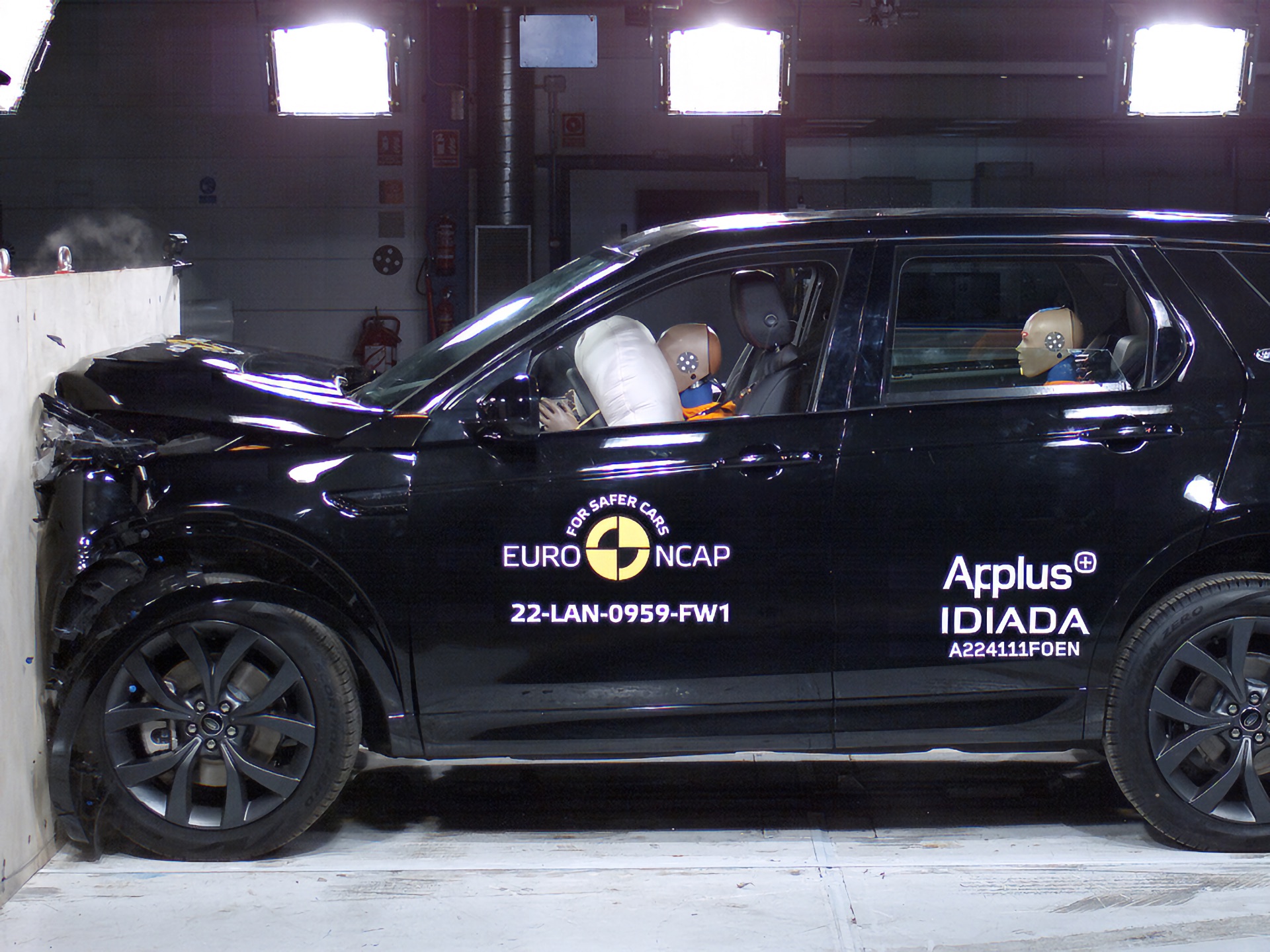ANCAP has awarded a revised five-star safety rating to the Land Rover Discovery Sport on the basis of testing by sister agency Euro NCAP. The rating applies to all updated L550 series variants built from February 2022 for Australia, excluding the Discovery Sport SE P300e PHEV which is unrated.
The current generation Discovery Sport was introduced in Australia in 2015 where it achieved a five-star rating against the test criteria of the time. Following safety upgrades introduced last year, the model underwent a fresh round of testing against the more stringent 2022 test criteria where it demonstrated continued five-star safety performance across all areas of ANCAP’s assessment.
“ANCAP’s assessments and vehicle safety have both come a long way since the Land Rover Discovery Sport was first assessed in 2014,” said Carla Hoorweg, Chief Executive of ANCAP. “For the same generation model to be awarded five-stars against ANCAP’s more recent protocols is an impressive achievement.”
ADULT OCCUPANT PROTECTION
The passenger compartment remained stable in the frontal offset (MPDB) test. Dummy readings indicated adequate protection of the lower legs of the driver and front passenger. Protection for all other critical body regions for the driver and front passenger was good.
The front structure presented a higher risk to occupants of an oncoming vehicle in the MPDB test (which evaluates vehicle-to-vehicle compatibility), and a 3.03-point penalty was applied.
In the full width frontal test, protection of the driver’s chest was adequate while protection of the rear passenger was marginal for the chest and adequate for the neck. Good protection was offered to all other critical body regions for the driver and rear passenger.
In the oblique pole test the side chest-protecting airbag did not deploy correctly, becoming caught on part of the interior trim, and a penalty was applied to the scores in the side impact and oblique pole tests. With this penalty, protection of the driver’s chest was assessed as adequate for the side impact test and marginal for the oblique pole test. All other critical body regions recorded good results.
A centre airbag to prevent contact between the heads of front seat occupants in side impacts is not available. Excursion (movement towards the other side of the vehicle) in the far side impact tests was assessed as adequate for both the vehicle-to-vehicle impact scenario and the vehicle-to-pole scenario.
CHILD OCCUPANT PROTECTION
In both the frontal offset and side impact tests, protection was good for all critical body areas for the six-year and 10-year child dummies.
The Discovery Sport is fitted with lower ISOFix anchorages on the second-row outboard seats and top tether anchorages for all second-row seating positions. Top tethers and ISOFix anchorages are not available in the third row so installation of child restraints is not recommended in this location.
Installation of typical child restraints available in Australia showed most child restraints could be accommodated in most second row seating positions, but the Type A capsule could not be correctly installed when using the seatbelt for attachment in the rear outboard seating positions, and one of the selected Type A convertible seats could not be correctly installed in rearward facing mode using the ISOfix anchorages.
VULNERABLE ROAD USER PROTECTION
The Discovery Sport has a pedestrian airbag. Sensors detect when a pedestrian is struck, and an airbag deploys to provide additional protection to the pedestrian’s head. Good or adequate results were recorded over most of the bonnet area with some marginal, weak and poor results recorded at the front edge of the bonnet surface.
Protection of the pelvis was poor, while the bumper provided good protection to pedestrians’ legs.
The autonomous emergency braking (AEB) system is capable of detecting and reacting to pedestrians and cyclists and offered adequate performance in pedestrian test scenarios. The system does not react to vulnerable road users in reverse, and hence AEB back-over tests were not conducted. In cyclist test scenarios, the AEB system offered good performance.
SAFETY ASSIST
As well as the AEB system, which is capable of functioning at highway speeds, the Discovery Sport is fitted with a lane support system (LSS) with lane-keep assist (LKA) and emergency lane-keeping (ELK) functionality, and blind spot monitoring (BSM).
Tests of its AEB (car-to-car) system showed good performance, including AEB junction assist where the test vehicle can autonomously brake to avoid crashes when turning across the path of an oncoming vehicle.
Tests of LSS functionality showed adequate performance overall, with adequate performance in the ELK test scenarios, and good performance in LKA scenarios.
A speed assistance system with speed limit information function is standard, informing drivers of the local speed limit and automatically adjusting the vehicle speed limiter accordingly.
A seatbelt reminder system is fitted for all front and rear seating positions. However, occupant detection is not available for rear seats. A driver drowsiness monitor system is fitted as standard.

